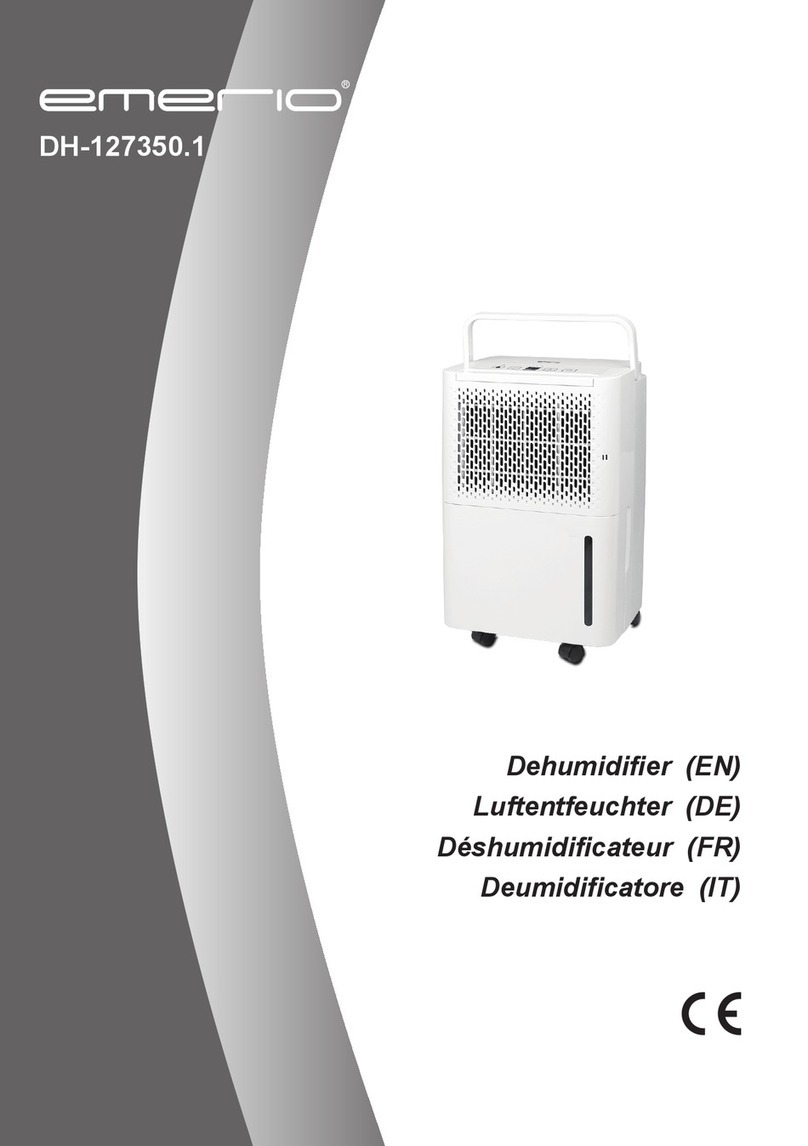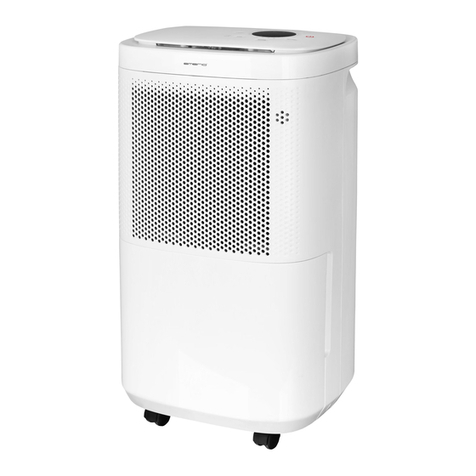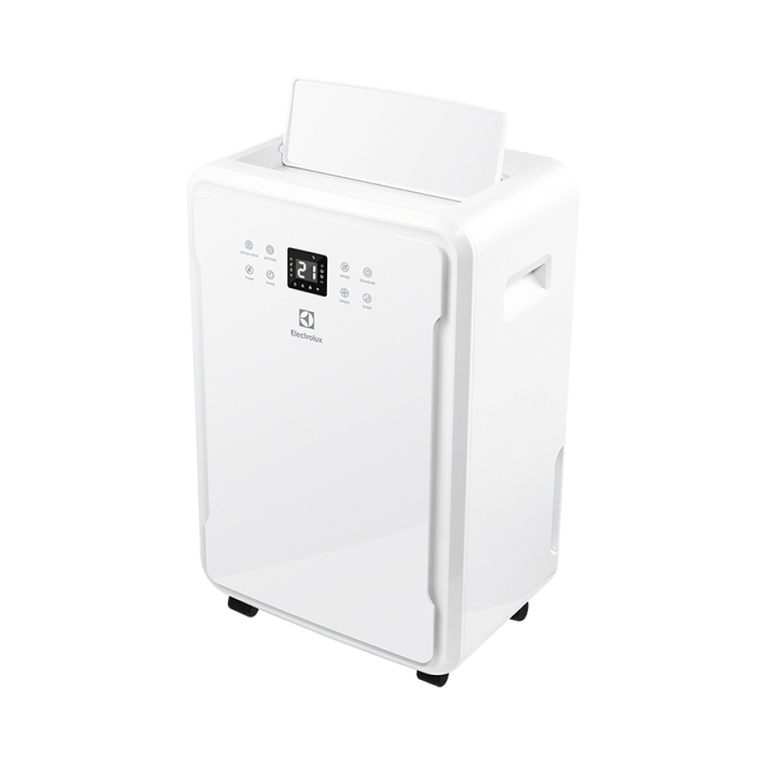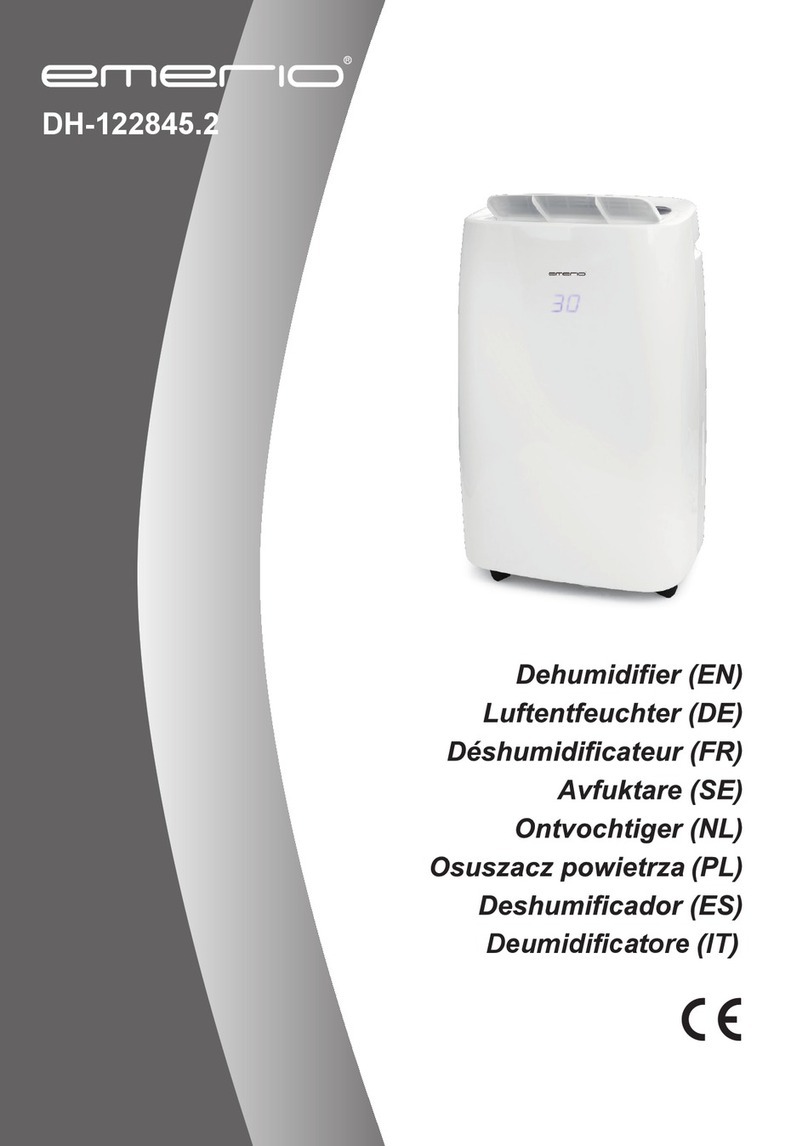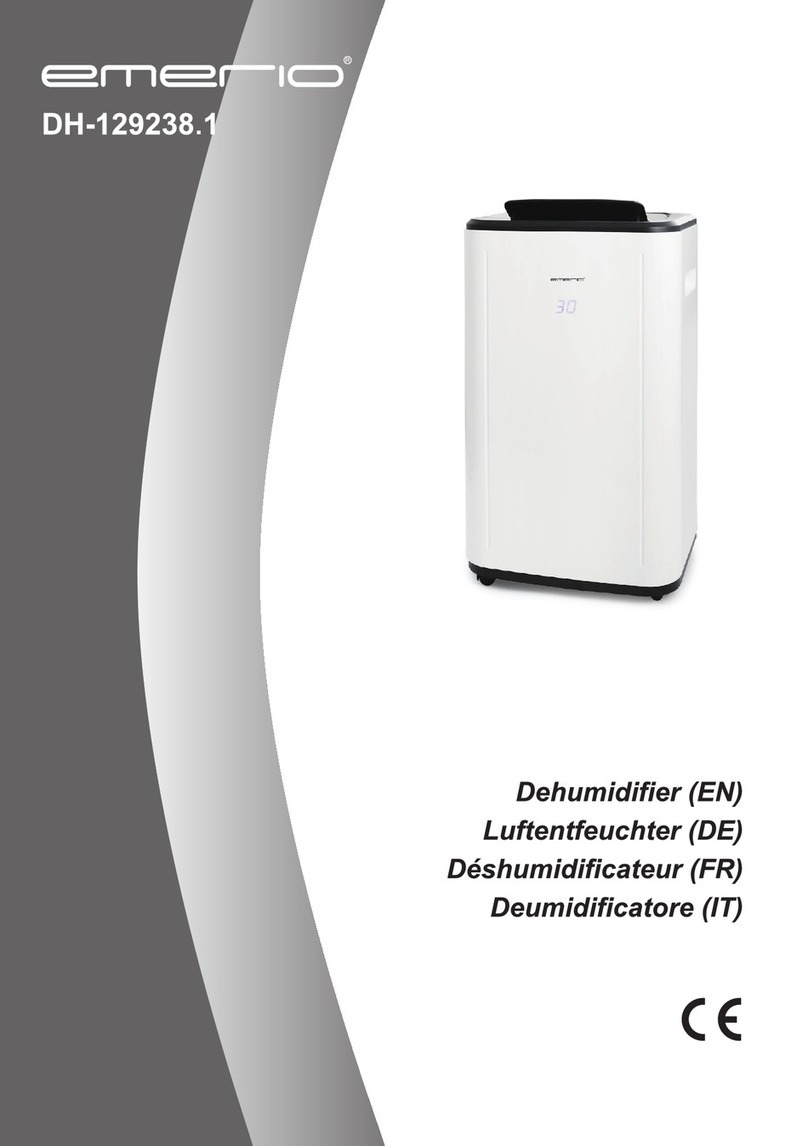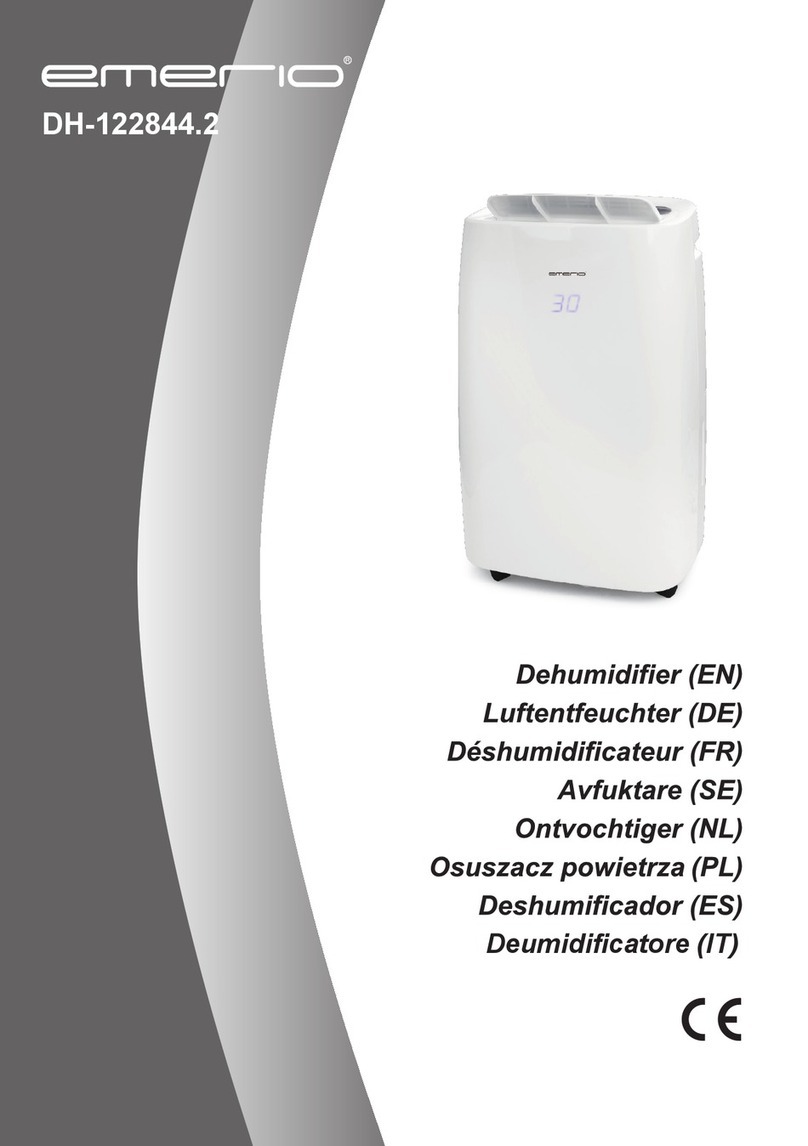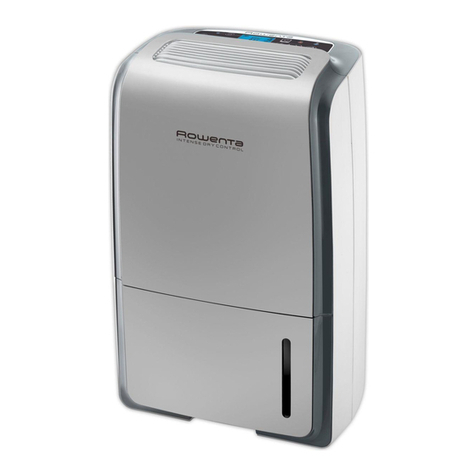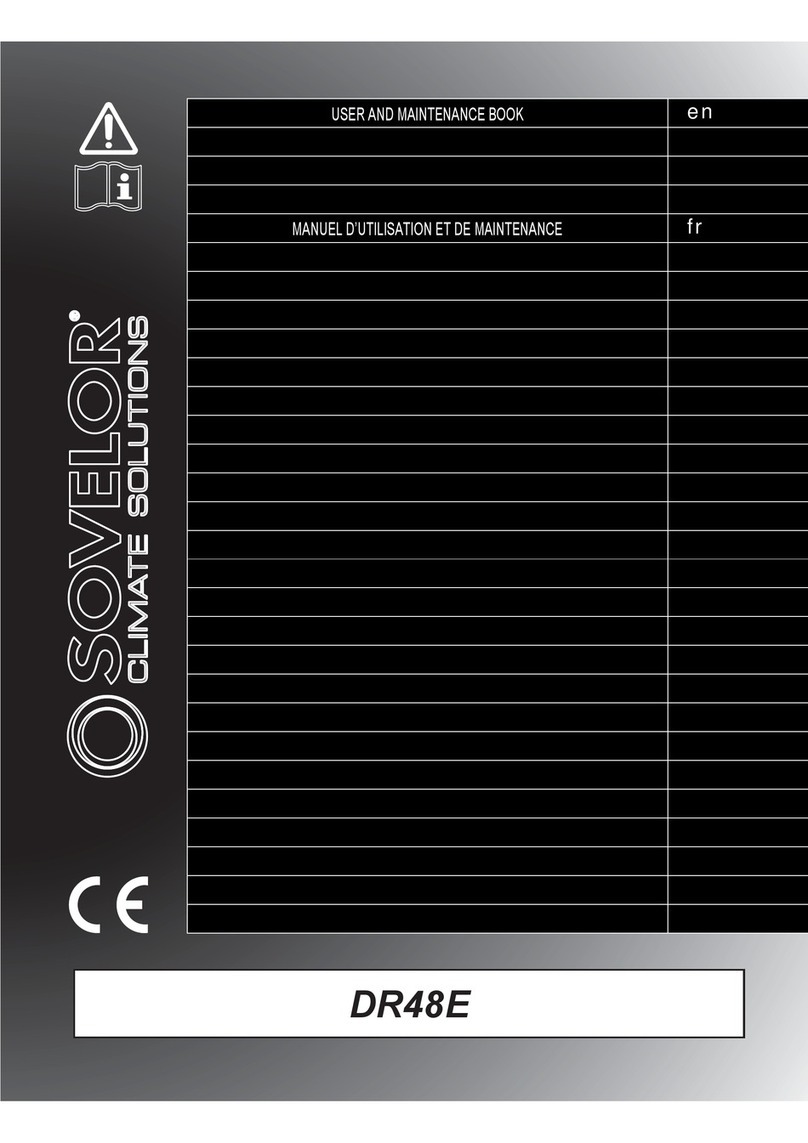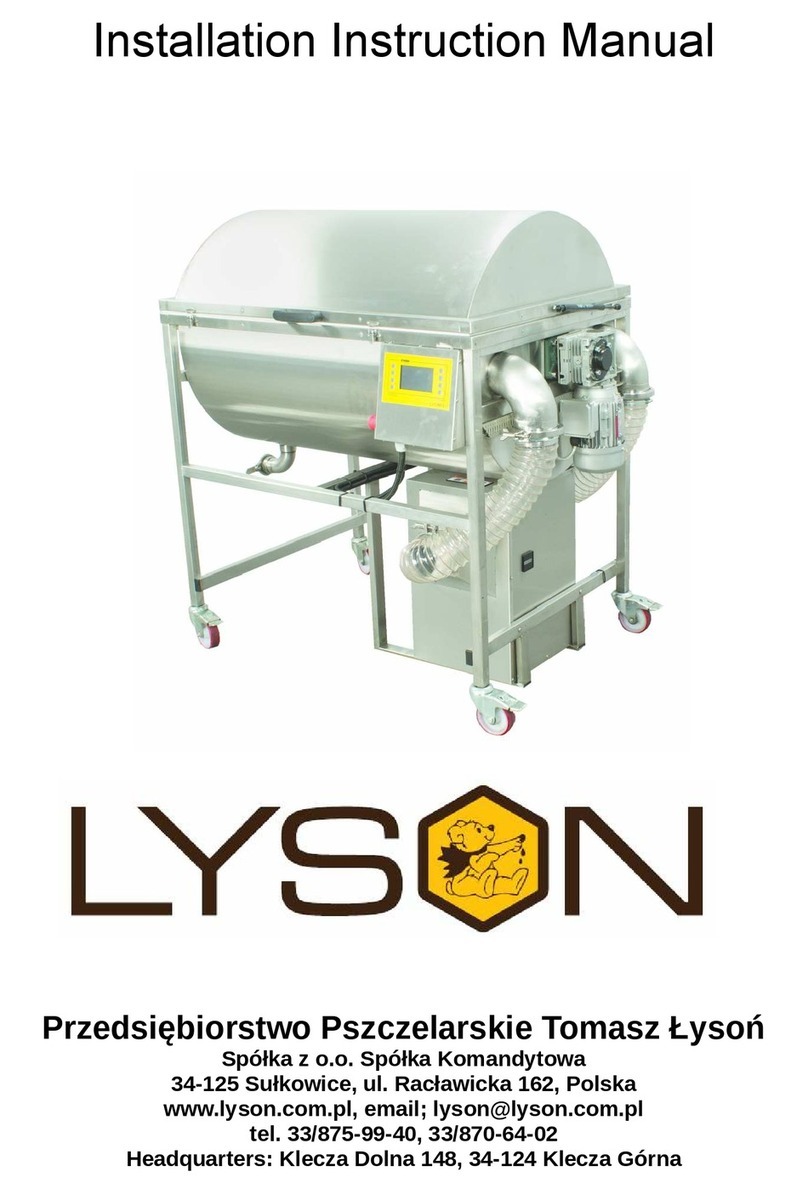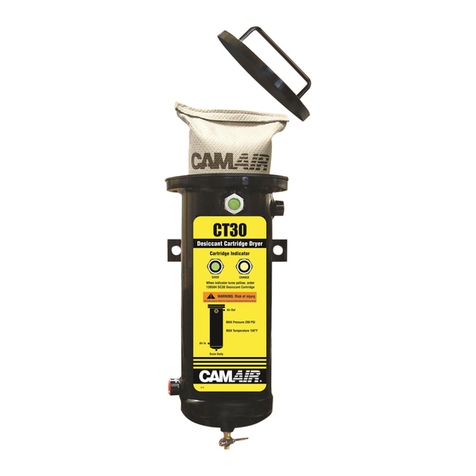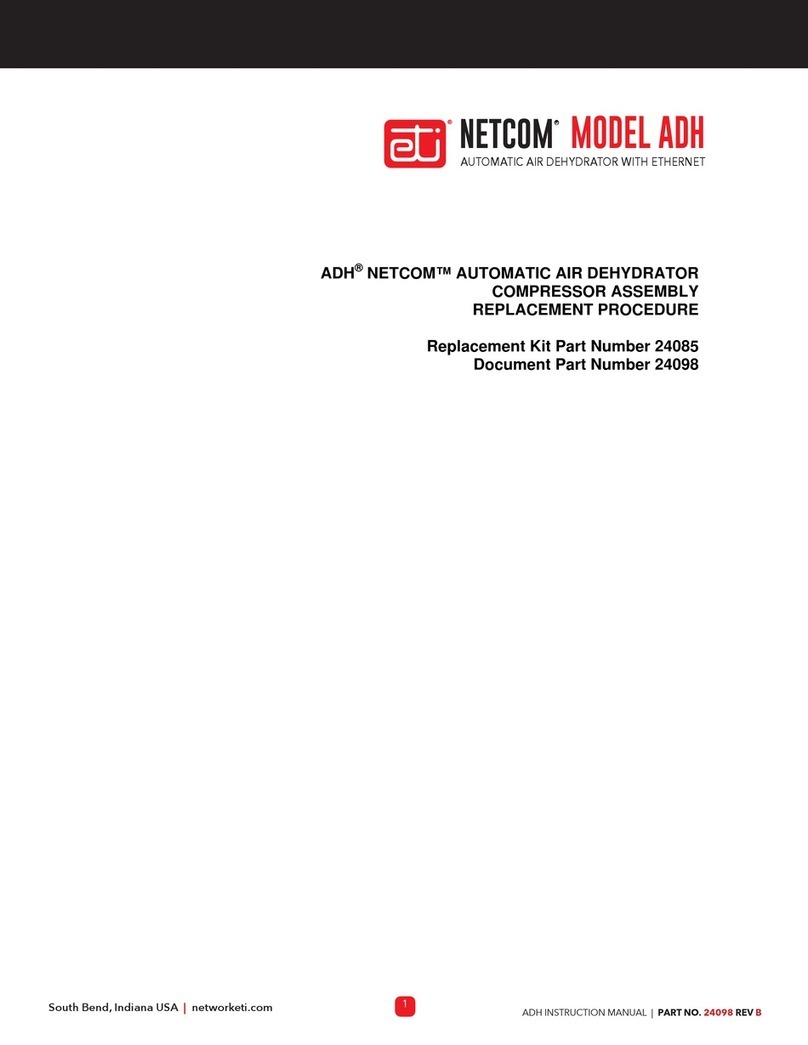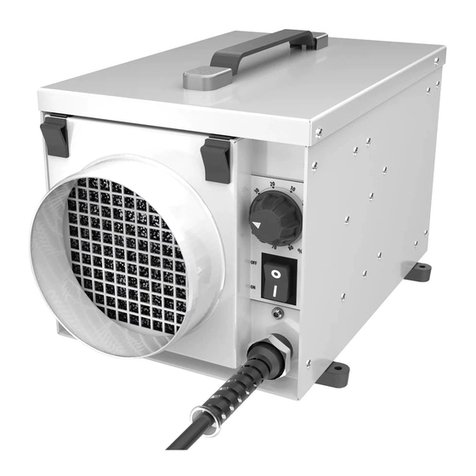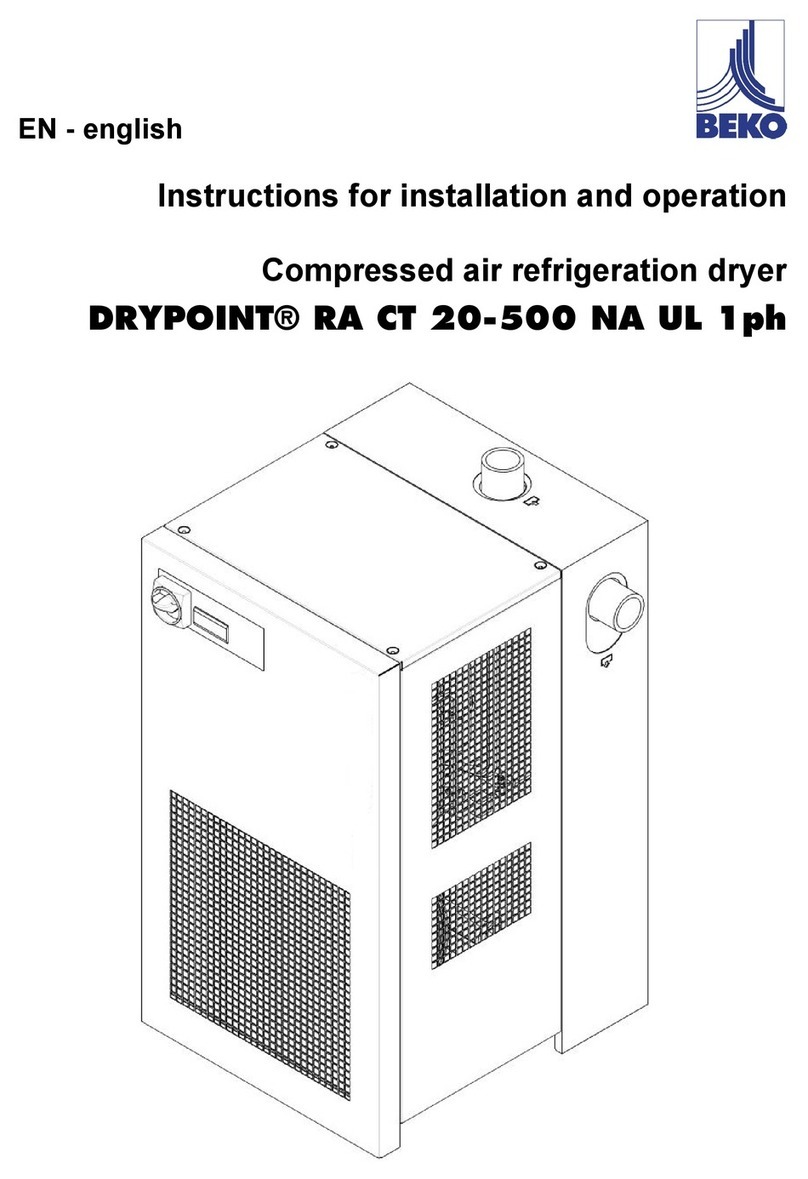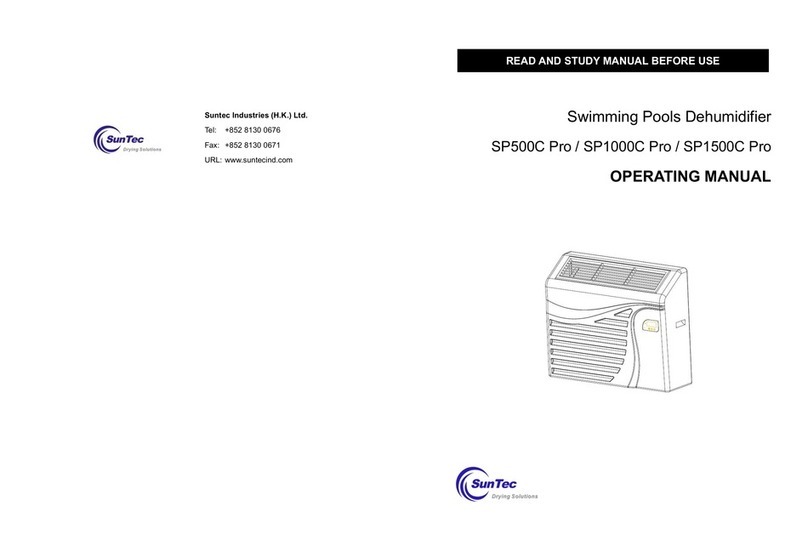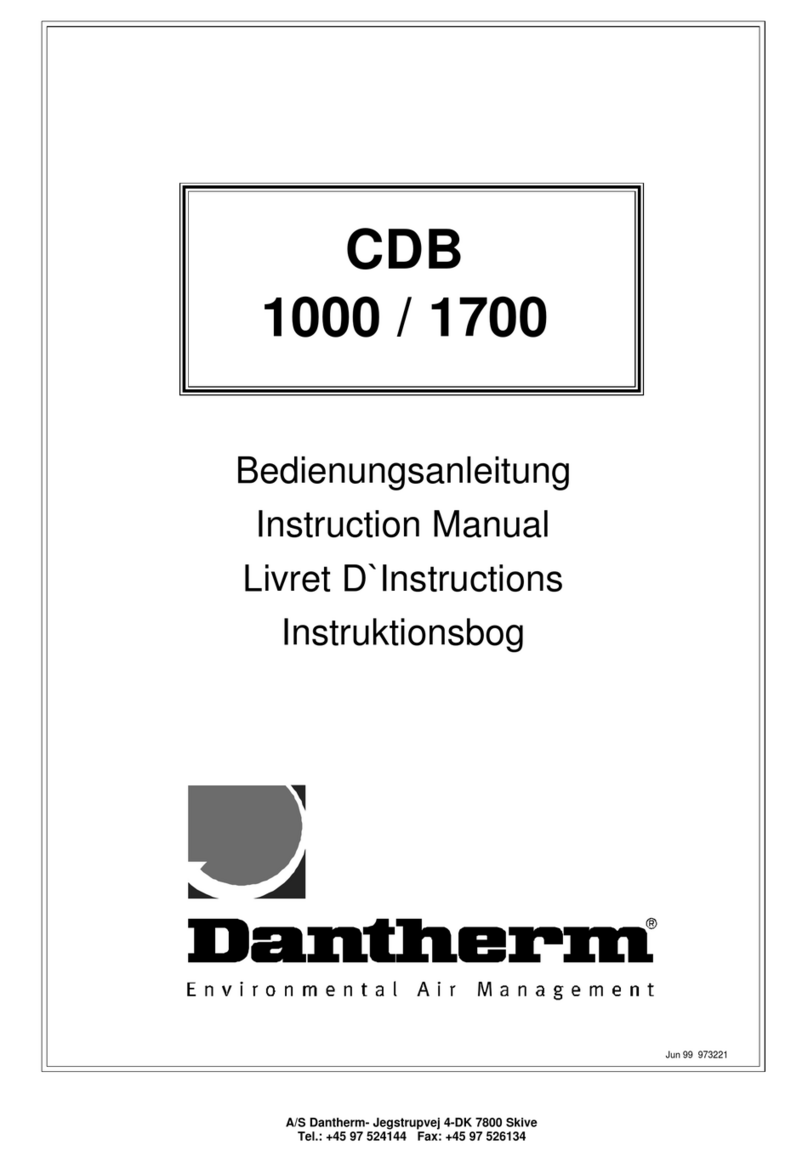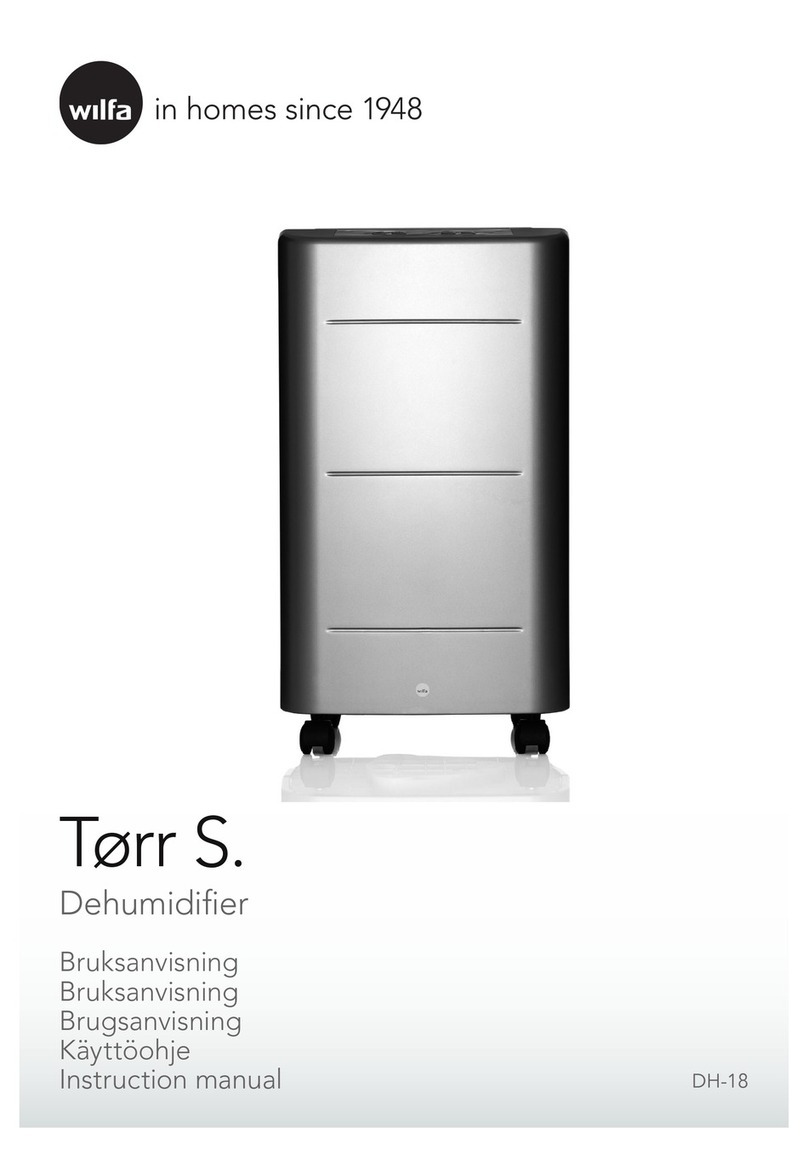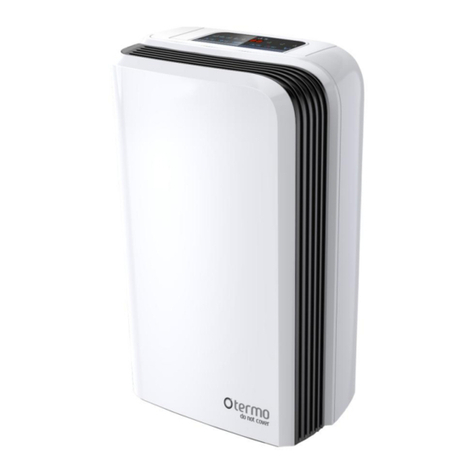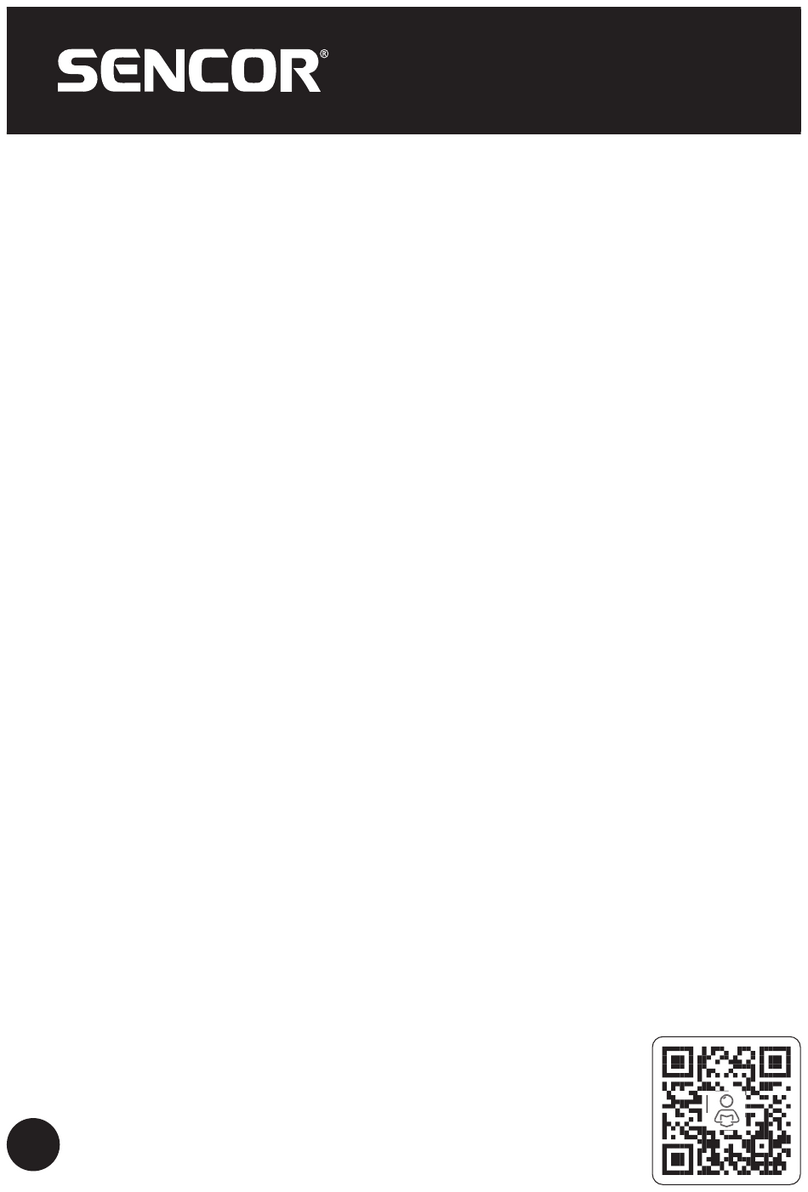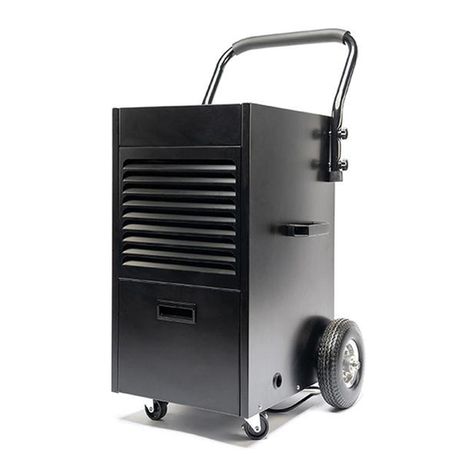emerio DH-128152.2 User manual

DH-128152.2
Dehumidifier (EN)
Luftentfeuchter (DE)
Déshumidificateur (FR)
Avfuktare (SE)
Ontvochtiger (NL)
Osuszacz powietrza (PL)
Deshumificador (ES)
Deumidificatore (IT)

- 1 -
Content – Inhalt – Teneur – Innehåll – Inhoud
– Treść – Contenido – Contenuto
Instruction manual –English......................................................................................- 2 -
Bedienungsanleitung –German...............................................................................- 23 -
Mode d'emploi –French ..........................................................................................- 46 -
Bruksanvisning –Swedish ........................................................................................- 69 -
Gebruiksaanwijzing –Dutch.....................................................................................- 90 -
Instrukcja obsługi – Polish ......................................................................................- 112 -
Manual de Instrucciones –Spanish ........................................................................- 135-
Manuale d'istruzioni –Italian.............................................................................................- 158-

- 2 -
Instruction manual –English
SAFETY INSTRUCTIONS
Before use make sure to read all of the below instructions in
order to avoid injury or damage, and to get the best results
from the appliance. Make sure to keep this manual in a safe
place. If you give or transfer this appliance to someone else
make sure to also include this manual.
In case of damage caused by user failing to follow the
instructions in this manual the warranty will be void. The
manufacturer/importer accepts no liability for damages
caused by failure to follow the manual, a negligent use or use
not in accordance with the requirements of this manual.
1. Read and save these instructions. Attention: pictures in the
instructions are for reference only.
2. This appliance can be used by children aged from 8 years
and above and persons with reduced physical, sensory or
mental capabilities or lack of experience and knowledge if
they have been given supervision or instruction concerning
use of the appliance in a safe way and understand the
hazards involved.
3. Children shall not play with the appliance.
4. Cleaning and user maintenance shall not be made by
children without supervision.
5. If the supply cord is damaged, it must be replaced by the
manufacturer, its service agent or similarly qualified
persons in order to avoid a hazard.
6. Before inserting the plug into the mains socket, please
check that the voltage and frequency comply with the
specifications on the rating label.
7. Disconnect the mains plug from the socket when the
appliance is not in use and before cleaning.
8. Ensure that the mains cable is not hung over sharp edges
and keep it away from hot objects and open flames.
9. Do not immerse the appliance or the mains plug in water
or other liquids. There is danger to life due to electric shock!

- 3 -
10. To remove the plug from the plug socket, pull the plug. Do
not pull the power cord.
11. Do not plug or unplug the appliance from the electrical
outlet with a wet hand.
12. Never attempt to open the housing of the appliance, or to
repair the appliance yourself. This could cause electric
shock.
13. This appliance is not designed for commercial use. Indoor
use only.
14. Do not use the appliance for other than intended use.
15. Do not wind the cord around the appliance and do not
bend it.
16. Do not use the unit in an area: near to source of fire; where
oil is likely to splash; exposed to direct sunlight; where
water is likely to splash; near a bath, a laundry, a shower or
a swimming pool.
17. Never insert your fingers, rods into the air outlet. Take
special care to warn children of these dangers.
18. Keep the unit upward while transport and storage, for the
compressor locates properly.
19. Before cleaning or moving the appliance, always turn off
and disconnect the power supply.
20. To avoid the possibility of fire disaster, the appliance shall
not be covered.
21. The appliance shall be installed in accordance with national
wiring regulations.
22. Details of type and rating of fuses: T, 250V AC, 2A or 3.15A.
23. Contact authorized service technician for repair or
maintenance of this unit.
24. Do not pull, deform or modify the power supply cord, or
immerse it in water. Pulling or misuse of the power supply
cord can result in damage to the unit and cause electrical
shock.
25. Compliance with national gas regulations shall be observed.

- 4 -
26. Servicing shall only be performed as recommended by the
equipment manufacturer. Maintenance and repair
requiring the assistance of other skilled personnel shall be
carried out under the supervision of the person competent
in the use of flammable refrigerants.
27. Do not operate or stop the unit by inserting or pulling out
power plug, it may cause electric shock or fire due to heat
generation.
28. Unplug the unit if strange sounds, smell, or smoke comes
from it.
29. Always plug the appliance into an earthed plug socket.
30. Do not use means to accelerate the defrosting process or
to clean, other than those recommended by the
manufacturer.
31. The appliance shall be stored in a room without
continuously operating ignition sources (for example: open
flames, an operating gas appliance or an operating electric
heater.)
32. Do not pierce or burn.
33. Be aware that refrigerants may not contain an odour.
34. If the appliance is installed, operated or stored in an
unventilated area, the room must be designed to prevent
to the accumulation of refrigerant leaks resulting in a risk
of fire or explosion due to ignition of the refrigerant caused
by electric heaters, stoves, or other sources of ignition.
35. The appliance must be stored in such a way as to prevent
mechanical failure.
36. This appliance contains R290 refrigerant gas. R290 is a
refrigerant gas that complies with the European directives
on the environment. Do not puncture any part of the
refrigerant circuit.
37. Individuals who operate or work on the refrigerant circuit
must have the appropriate certification issued by an
accredited organization that ensures competence in
handling refrigerants according to a specific evaluation
recognized by associations in the industry.

- 5 -
38. Regarding the instructions for repairing appliances
containing R290, please kindly refer to below paragraphs.
39. To avoid any damage, place the appliance in an upright
position for at least 2 hours before initiation.
Warning: Risk of fire / Flammable materials.
Read instruction manuals.
Operator’s manual; operating instructions.
Service indicator; read technical manual.
Warning: Keep ventilation openings clear of obstruction.
Warning: The appliance shall be stored in a well-ventilated
area where the room size corresponds to the room area as
specified for operation.
All working procedure that affects safety means shall only be
carried out by competent persons.
The required distance around the unit should be at least 30cm.
Appliance shall be installed, operated and stored in a room
with a floor area larger than 4 m2.

- 6 -
DH-128152.2 EN
NOTICE BEFORE USE
1. Please make sure the inlet and outlet ventilation are not blocked at all times.
2. Operate this unit on a horizontal surface to avoid water leakage.
3. Do not operate this unit in an explosive or corrosive atmosphere.
4. When the unit is shut off, please wait at least 3 minutes before restarting this is to prevent the compressor
from being damaged.
5. Use separate power supply. Prohibit the sharing of a socket with other electrical appliances. Power outlet
specifications should not be less than 10A. Sockets must be firmly safe.
6. Do not submerge the unit in water, or place the unit close to water.
7. Do not sit or stand on the unit.
8. Do not operate the unit in a closed area such as inside a closet, as it may cause a fire.
PARTS DESCRIPTION
1. Control panel
2. Handle
3. Air inlet and filter
4. Water tank
5. Air outlet
6. Continuous drainage outlet
Important! The power cord is stored in the water tank to avoid damage during transport. Please draw out the
water tank to release the power cord before use.

- 7 -
CONTROL PANEL
1. Power button
2. Fan speed button
3. Increasing setting button
4. Decreasing setting button
5. Mode button
6. Timer button
7. High fan speed indicator light
8. Low fan speed indicator light
9. Water tank full indicator light (It also lights up when the water tank is not properly placed.)
10. Digital display
11. Clothes drying mode indicator light
12. Dehumidification mode indicator light
13. Silence mode indicator light
14. Timer indicator light
BEFORE FIRST USE
•To avoid any damage, place the appliance in an upright position for at least 2 hours before initiation.
•After removing the packaging, make sure that the appliance is in good condition.
•Do not allow children to play with the packaging materials as there is risk of suffocation.
The appliance shall be installed on a flat surface where the air inlet/outlet would not be blocked. The required
distance around the unit should be at least 30cm. To save energy, keep windows and door closed when the
appliance is running.
Note: If the dehumidifier gets interference from the household appliances, such as television and radio cassette
player, please keep the equipment away from the dehumidifier for over 70cm.
USE
Plug in the appliance.
Power button
Press the power button to turn on the appliance. Press the button again to turn off the appliance.
Mode button
Press the mode button to select your desired mode: clothes drying mode, dehumidification mode or silence
mode.
1. Clothes drying mode: the indicator light illuminates. The compressor keeps running continuously. The
fan speed cannot be adjusted and the unit works at high fan speed by default. The humidity cannot be set
and the room humidity is shown on the digital display.
15. Wi-Fi indicator light

- 8 -
2. Dehumidification mode: the indicator light illuminates. The fan speed can be switched between low and
high. The humidity can be set between 30-90%RH or set to “Co” (Continuous). Press the button “+” / “-” to
adjust the setting. The setting will be in effect in approx. 10 seconds with no further operations. The digital
display will turn back to show the room humidity.
1) When the room humidity ≥ set humidity + 3%, the compressor starts working and the fan keeps running
at the set speed. After dehumidifying, when the room humidity ≤ set humidity - 3%, the compressor is
turned off and the dehumidifying is stopped. Once the room humidity ≥ set humidity + 3% again, the
compressor resumes working. Thus, the indoor humidity can be maintained at the set humidity
according to the above cycle operations.
2) When the set humidity is "Co", the compressor runs continuously without the limitation of the set
humidity, and the fan speed is adjustable.
3. Silence mode: the indicator light illuminates. The fan speed cannot be adjusted and the unit works at a
lower fan speed by default. Other operations follow the dehumidification mode.
Increasing/decreasing setting buttons
Press the buttons “+” / “-” to adjust the setting of humidity or timer.
Fan speed button
Press the fan speed button to select low or high fan speed. The corresponding indicator light will illuminate.
Timer button
Timer ON setting:
- When the appliance is off, press the button “TIMER”, the corresponding indicator light will flash.
- Press the button “+” / ”-” to select a desired ON time from 0-24 hours. The value will flash on the digital
display and the setting will be in effect in approx. 5 seconds.
- The appliance will automatically turn on once the set time has passed.
Timer OFF setting:
- When the appliance is working, press the button “TIMER”, the corresponding indicator light will flash.
- Press the button “+” / ”-” to select a desired OFF time from 0-24 hours. The value will flash on the digital
display and the setting will be in effect in approx. 5 seconds. The digital display will turn back to show the
humidity.
- The appliance will automatically turn off once the set time has passed.
Note: Press the button “TIMER” again to check the remaining time. Continue to press the button “TIMER”, the
timer function will be cancelled.
Notice:
1. The room humidity display range is 35~95%RH (room humidity < 35%, display “Lo”; room humidity > 95%,
display “Hi”). The working environment temperature of this appliance is 5~35 ℃, and the working
environment humidity is 10~95%RH.
2. The compressor has a three-minute delay protection function. When the compressor is working and the
power is cut off accidentally, the compressor will not restart immediately after turned on again. It will start
to work in 3 minutes.
After switching mode or after the full water fault is removed, the compressor may enter the protection state
too. You must wait for 3 minutes before the compressor can start again.

- 9 -
Wi-Fi CONNECTION GUIDE (This guide for the APP may not be up to date due to software version upgrade or
other reasons. This instruction is used as a guide only. Below mobile phone interface uses English version in
iOS as an example.):
1. Search “Smart Life” in App Store (for iOS) or Google play (for Android) to download the application.
2. Sign up or log in to your account on the APP. Tap the “+” at top right corner or button “Add Device” to add
your device. (Fig.1)
3. Find “Small Home Appliances” and tap the icon “Dehumidifier (Wi-Fi)”. (Fig.2)
You will get the prompt that asks you to use 2.4 GHz Wi-Fi network and enter password. (Fig.3) Tap “Next”
to get Fig.4.
Note: When setting up Wi-Fi function you need to select an available 2.4 GHz network and connect the
appliance. Your mobile needs to be connected to the same network in order to set up Smart Life in the
phone. When this is done you can access the appliance from your phone on any network.
There are two ways to do the net pairing. Press and hold the button “SPEED”on the control panel for
approx. 10 seconds until the Wi-Fi indicator light blinks quickly (way 1). Continue to press and hold the
button “SPEED”until the Wi-Fi indicator light blinks slowly (way 2).
It is recommended to use way 1; if failed please use way 2.
Way 1:
1) Press and hold the button “SPEED”on the control panel for approx. 10 seconds until the Wi-Fi indicator
light blinks quickly.
2) Tap “Confirm the indicator is blinking” in Fig.4. You will get Fig.5 that asks you to select the status of
the indicator light. Tap “Blink Quickly”.
3) Wait until you get Fig.7 and then tap “Done”.
4) Now you can operate your device in the control interface. Tap buttons to set your appliance.
Way 2:
1) Press and hold the button “SPEED”on the control panel for approx. 10 seconds until the Wi-Fi indicator
light blinks quickly. Continue to press and hold the Wi-Fi button until the Wi-Fi indicator light blinks
slowly.
2) Tap “Confirm the indicator is blinking” in Fig.4. You will get Fig.5 that asks you to select the status of
the indicator light. Tap “Blink Slowly”.
Continue to tap “Go to Connect” in Fig.6 to connect your mobile phone to the device’s hotspot
“SmartLife-XXXX”. After the hotspot has been connected, go back to the App.
3) Wait until you get Fig.7 and then tap “Done”.
4) Now you can operate your device in the control interface. Tap buttons to set your appliance.
Note: The appliance is compatible with Alexa and Google Assistant.

- 10 -
Fig.1 Fig.2
Fig.3
Fig.4

- 11 -
Fig.5
Fig.6 Fig.7
Control interface
Tap “ ” in Fig.8, the interface will turn to Fig.9 and the appliance will begin to work.
Fig.8 Fig.9

- 12 -
1. Mode button (10. Dehumidification mode / 11. Clothes drying mode / 12. Silence mode)
2. Fan speed button (13. Low fan speed / 14. High fan speed)
3. Function button (15. UV function, not valid for this model / 16. Ions function, not valid for this model)
4. Timer button (To add an off timer while the unit is running, or an on timer while the unit is in standby.)
5. Decreasing setting button
6. Increasing setting button
7. Set humidity display
8. Room humidity display
9. Room temperature display

- 13 -
DRAIN THE COLLECTED WATER
When the water tank is full, the water tank full indicator light will illuminate. The operation will stop
automatically and the buzzer will beep 15 times to alert the user that the water needs to be emptied from the
water tank.
Empty the water tank
1. Draw out the water tank gently by holding at the both sides.
2. Discard the collected water.
3. Install the water tank back by pushing it horizontally and gently.
Caution:
1) Do not remove the float from the water tank. The water full sensor will no longer be able to detect the water
level correctly without the float and water may leak from the water tank.
2) Do not use the detergents, steel velvet, chemical treated dusting cloth, gasoline, benzene, thinner or other
solvents to clean the water tank.
3) Put the water tank back into the appliance tightly with both hands. If the water tank is not placed in the right
position, the water full sensor will still be activated, and the dehumidifier will not work.
Continuous water drainage
Plug the provided plastic pipe to the continuous drainage outlet, and the condensed water will be continuously
drained out through this outlet instead of collection in the water tank. Make sure the pipe is installed at a
downhill way to let the water continuously flow out.

- 14 -
CLEANING AND MAINTENANCE
The appliance must be regularly cleaned to prolong its life and keep it function properly.
Warning: Before performing any cleaning, turn off the unit and unplug it to avoid electrical shocks. Do not use
hot water or chemical solvents for cleaning.
1. Regularly, clean the water tank with cold or warm water and dry with a soft cloth to avoid any mildew.
2. Clean the surface of the appliance using a moist cloth. Do not use detergents or abrasive sponges that can
cause damage to the plastic surface.
3. Clean the filter as described in the following section.
4. When the unit will not be used for a long time:
1) Empty and dry the water tank, and then install it back.
2) Clean the filter.
3) Place the appliance upright and avoid the direct sunlight.
Filter
There is a filter set at the back of the appliance that must be removed and cleaned regularly. The dehumidifying
capacity may reduce when the filter set is clogged.
Pull out the air inlet grille from the top to take it off the appliance. Detach the filter from the grille.
It is recommended to wash at least once every two weeks of continuous use.
If the filter is not dirty, just vacuum the dust off it.
If the filter is dirty, simply wash with cold water or warm water not exceeding 40 degrees; do not use
chemical solvents or hot water.
Dry the filter well before assembly.
Notice:
In order to prevent the filter from being deformed, it needs to be air-dried naturally after cleaning. Never use a
dryer or heater of any kind. Do not use alcohol, gasoline, benzene or other chemical solvents to clean the filter.

- 15 -
TROUBLE SHOOTING
Status
Possible reason
Solutions
Dehumidifier is not
working
Is the power plug unplugged?
Insert the power plug into the
socket.
Is the water tank full? Or is the water
tank placed in the wrong position?
Drain the standing water in the tank
and put the tank back in the correct
position.
Is the room temperature above 35℃
or under 5℃?
The protection device is started and
the machine cannot work.
Dehumidification
function does not
work
Is the air filter blocked?
Clean the air filter.
Are the air outlets or air inlets
blocked?
Clean up any items that block the air
outlet or air inlet.
No wind
Is the air filter blocked?
Clean the air filter.
Too much noise
when the machine
is running
Is it improperly placed so that the
machine is tilted or unstable?
Please prevent the machine from
being used on unstable ground.
Is the air filter blocked?
Clean the air filter.
E1 Code
Coil sensor short circuit or open circuit
Contact after-sales service.
TECHNICAL DATA
Dehumidify Capacity
10L/day (30℃, 80%RH)
Rated Voltage
AC 220-240 V
Rated Frequency
50 Hz
Rated power input
250 W
Rated Current
1.4 A
Refrigerant
R290
GUARANTEE AND CUSTOMER SERVICE
Before delivery our devices are subjected to rigorous quality control. If, despite all care, damage has occurred
during production or transportation, please return the device to your dealer.
For the purchased device we provide 2 years guarantee, commencing from the day of sale. If you have a defective
product, you can directly go back to the point of purchase.
Defects which arise due to improper handling of the device and malfunctions due to interventions and repairs
by third parties or the fitting of non-original parts are not covered by this guarantee. Always keep your receipt,
without the receipt you can’t claim any form of warranty. Damage caused by not following the instruction manual,
will lead to a void of warranty, if this results in consequential damages then we will not be liable. Neither can we
hold responsible for material damage or personal injury caused by improper use or if the instruction manual are
not properly executed. Damage to accessories does not mean free replacement of the whole appliance. In such
case please contact our service department. Broken glass or breakage of plastic parts is always subject to a charge.
Defects to consumables or parts subjected to wearing, as well as cleaning, maintenance or the replacement of
said parts are not covered by the warranty and are to be paid.

- 16 -
ENVIRONMENT FRIENDLY DISPOSAL
Recycling – European Directive 2012/19/EU
This marking indicates that this product should not be disposed with other household wastes. To
prevent possible harm to the environment or human health from uncontrolled waste disposal, recycle
it responsibly to promote the sustainable reuse of material resources. To return your used device,
please use the return and collection systems or contact the retailer where the product was purchased. They can
take this product for environmental safe recycling.
Emerio B.V. Customer service:
Kundeninformation:
Klantenservice:
Oudeweg 115 T: +31 (0) 23 3034369 T: +49 (0) 3222 1097 600 T: +31 (0) 23 3034369
2031 CC Haarlem
www.emerio.eu/service
www.emerio.eu/service www.emerio.eu/service
The Netherlands
Looking for spare parts? Have a look at https://spareparts.emerio.eu
Sie brauchen Ersatzteile? Besuchen Sie https://ersatzteile.emerio.eu
Onderdelen nodig? Kijk op https://onderdelen.emerio.eu

- 17 -
INSTRUCTIONS FOR REPAIRING APPLIANCES CONTAINING R290
1. Servicing
1) Checks to the area
Prior to beginning work on systems containing flammable refrigerants, safety checks are necessary to ensure
that the risk of ignition is minimised. For repair to the refrigerating system, the following precautions shall be
complied with prior to conducting work on the system.
2) Work procedure
Work shall be undertaken under a controlled procedure so as to minimise the risk of a flammable gas or vapour
being present while the work is being performed.
3) General work area
All maintenance staff and others working in the local area shall be instructed on the nature of work being carried
out. Work in confined spaces shall be avoided. The area around the workspace shall be sectioned off. Ensure that
the conditions within the area have been made safe by control of flammable material.
4) Checking for presence of refrigerant
The area shall be checked with an appropriate refrigerant detector prior to and during work, to ensure the
technician is aware of potentially flammable atmospheres. Ensure that the leak detection equipment being used
is suitable for use with flammable refrigerants, i.e. non-sparking, adequately sealed or intrinsically safe.
5) Presence of fire extinguisher
If any hot work is to be conducted on the refrigeration equipment or any associated parts, appropriate fire
extinguishing equipment shall be available to hand. Have a dry powder or CO₂ fire extinguisher adjacent to the
charging area.
6) No ignition sources
No person carrying out work in relation to a refrigeration system which involves exposing any pipe work that
contains or has contained flammable refrigerant shall use any sources of ignition in such a manner that it may
lead to the risk of fire or explosion. All possible ignition sources, including cigarette smoking, should be kept
sufficiently far away from the site of installation, repairing, removing and disposal, during which flammable
refrigerant can possibly be released to the surrounding space. Prior to work taking place, the area around the
equipment is to be surveyed to make sure that there are no flammable hazards or ignition risks. “No Smoking”
signs shall be displayed.
7) Ventilated area
Ensure that the area is in the open or that it is adequately ventilated before breaking into the system or
conducting any hot work. A degree of ventilation shall continue during the period that the work is carried out.
The ventilation should safely disperse any released refrigerant and preferably expel it externally into the
atmosphere.
8) Checks to the refrigeration equipment
Where electrical components are being changed, they shall be fit for the purpose and to the correct specification.
At all times the manufacturer’s maintenance and service guidelines shall be followed. If in doubt consult the
manufacturer’s technical department for assistance.
The following checks shall be applied to installations using flammable refrigerants:
– The charge size is in accordance with the room size within which the refrigerant containing parts are installed;
– The ventilation machinery and outlets are operating adequately and are not obstructed;
– If an indirect refrigerating circuit is being used, the secondary circuit shall be checked for the presence of
refrigerant;
– Marking to the equipment continues to be visible and legible. Markings and signs that are illegible shall be
corrected;
– Refrigeration pipe or components are installed in a position where they are unlikely to be exposed to any
substance which may corrode refrigerant containing components, unless the components are constructed of
materials which are inherently resistant to being corroded or are suitably protected against being so corroded.

- 18 -
9) Checks to electrical devices
Repair and maintenance to electrical components shall include initial safety checks and component inspection
procedures. If a fault exists that could compromise safety, then no electrical supply shall be connected to the
circuit until it is satisfactorily dealt with. If the fault cannot be corrected immediately but it is necessary to
continue operation, an adequate temporary solution shall be used. This shall be reported to the owner of the
equipment so all parties are advised. Initial safety checks shall include:
• That capacitors are discharged: this shall be done in a safe manner to avoid possibility of sparking;
• That there no live electrical components and wiring are exposed while charging, recovering or purging the
system;
• That there is continuity of earth bonding.
2. Repairs to sealed components
1) During repairs to sealed components, all electrical supplies shall be disconnected from the equipment being
worked upon prior to any removal of sealed covers, etc. If it is absolutely necessary to have an electrical supply
to equipment during servicing, then a permanently operating form of leak detection shall be located at the most
critical point to warn of a potentially hazardous situation.
2) Particular attention shall be paid to the following to ensure that by working on electrical components, the
casing is not altered in such a way that the level of protection is affected. This shall include damage to cables,
excessive number of connections, terminals not made to original specification, damage to seals, incorrect fitting
of glands, etc.
Ensure that apparatus is mounted securely. Ensure that seals or sealing materials have not degraded such that
they no longer serve the purpose of preventing the ingress of flammable atmospheres. Replacement parts shall
be in accordance with the manufacturer’s specifications.
NOTE: The use of silicon sealant may inhibit the effectiveness of some types of leak detection equipment.
Intrinsically safe components do not have to be isolated prior to working on them.
3. Repair to intrinsically safe components
Do not apply any permanent inductive or capacitance loads to the circuit without ensuring that this will not
exceed the permissible voltage and current permitted for the equipment in use. Intrinsically safe components
are the only types that can be worked on while live in the presence of a flammable atmosphere. The test
apparatus shall be at the correct rating. Replace components only with parts specified by the manufacturer.
Other parts may result in the ignition of refrigerant in the atmosphere from a leak.
4. Cabling
Check that cabling will not be subject to wear, corrosion, excessive pressure, vibration, sharp edges or any other
adverse environmental effects. The check shall also take into account the effects of aging or continual vibration
from sources such as compressors or fans.
5. Detection of flammable refrigerants
Under no circumstances shall potential sources of ignition be used in the searching for or detection of refrigerant
leaks. A halide torch (or any other detector using a naked flame) shall not be used.
6. Leak detection methods
The following leak detection methods are deemed acceptable for systems containing flammable refrigerants.
Electronic leak detectors shall be used to detect flammable refrigerants, but the sensitivity may not be adequate,
or may need re-calibration. (Detection equipment shall be calibrated in a refrigerant-free area.) Ensure that the
detector is not a potential source of ignition and is suitable for the refrigerant used. Leak detection equipment
shall be set at a percentage of the LFL of the refrigerant and shall be calibrated to the refrigerant employed and

- 19 -
the appropriate percentage of gas (25 % maximum) is confirmed. Leak detection fluids are suitable for use with
most refrigerants but the use of detergents containing chlorine shall be avoided as the chlorine may react with
the refrigerant and corrode the copper pipe-work. If a leak is suspected, all naked flames shall be removed/
extinguished. If a leakage of refrigerant is found which requires brazing, all of the refrigerant shall be recovered
from the system, or isolated (by means of shut off valves) in a part of the system remote from the leak. Oxygen
free nitrogen (OFN) shall then be purged through the system both before and during the brazing process.
7. Removal and evacuation
When breaking into the refrigerant circuit to make repairs – or for any other purpose – conventional procedures
shall be used. However, it is important that best practice is followed since flammability is a consideration. The
following procedure shall be adhered to:
• Remove refrigerant;
• Purge the circuit with inert gas;
• Evacuate;
• Purge again with inert gas;
• Open the circuit by cutting or brazing.
The refrigerant charge shall be recovered into the correct recovery cylinders. The system shall be “flushed” with
OFN to render the unit safe. This process may need to be repeated several times. Compressed air or oxygen shall
not be used for this task. Flushing shall be achieved by breaking the vacuum in the system with OFN and
continuing to fill until the working pressure is achieved, then venting to atmosphere, and finally pulling down to
a vacuum. This process shall be repeated until no refrigerant is within the system. When the final OFN charge is
used, the system shall be vented down to atmospheric pressure to enable work to take place. This operation is
absolutely vital if brazing operations on the pipe-work are to take place. Ensure that the outlet for the vacuum
pump is not close to any ignition sources and there is ventilation available.
8. Charging procedures
In addition to conventional charging procedures, the following requirements shall be followed.
– Ensure that contamination of different refrigerants does not occur when using charging equipment. Hoses or
lines shall be as short as possible to minimise the amount of refrigerant contained in them.
– Cylinders shall be kept upright.
– Ensure that the refrigeration system is earthed prior to charging the system with refrigerant.
– Label the system when charging is complete (if not already).
– Extreme care shall be taken not to overfill the refrigeration system.
Prior to recharging the system it shall be pressure tested with OFN. The system shall be leak tested on completion
of charging but prior to commissioning. A follow up leak test shall be carried out prior to leaving the site.
9. Decommissioning
Before carrying out this procedure, it is essential that the technician is completely familiar with the equipment
and all its detail. It is recommended good practice that all refrigerants are recovered safely. Prior to the task
being carried out, an oil and refrigerant sample shall be taken in case analysis is required prior to re-use of
reclaimed refrigerant. It is essential that electrical power is available before the task is commenced.
a) Become familiar with the equipment and its operation.
b) Isolate system electrically.
c) Before attempting the procedure ensure that:
• Mechanical handling equipment is available, if required for handling refrigerant cylinders;
• All personal protective equipment is available and being used correctly;
• The recovery process is supervised at all times by a competent person;
• Recovery equipment and cylinders conform to the appropriate standards.
Table of contents
Languages:
Other emerio Dehumidifier manuals
